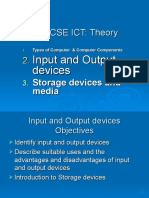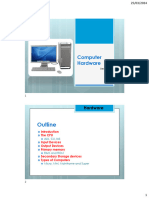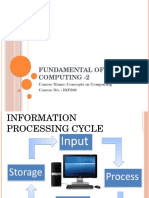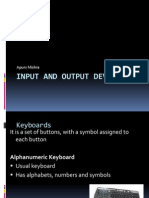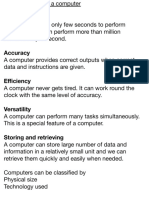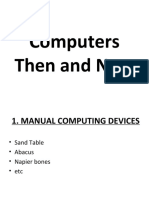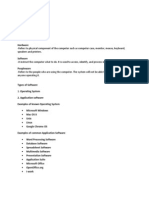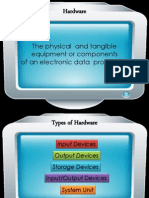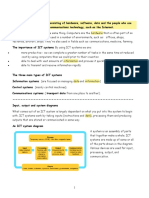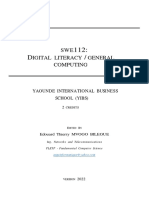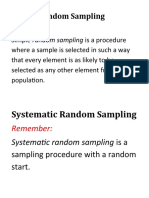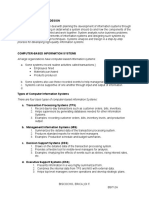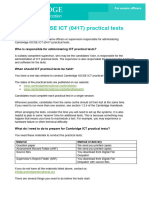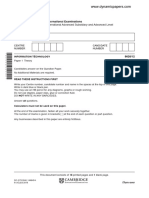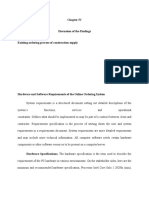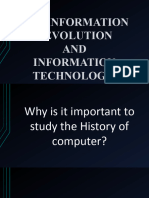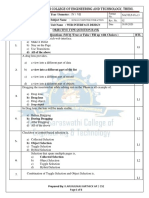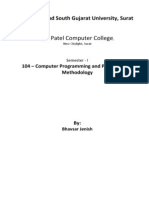0% found this document useful (0 votes)
126 views22 pagesIntro to InfoTech Basics
The document discusses the fundamentals of information technology including its key components. Information technology merges computing and communications to allow data, sound, and video to be transmitted over long distances. Technological convergence combines computers and communications, allowing information to be exchanged in computer-readable formats. The core components of information technology systems are hardware, software, data/information, people, procedures, and communication links. Input devices take various forms like keyboards, mice, cameras, and sensors to convert real-world data into digital formats for processing by computers.
Uploaded by
Erica Joi Flores BiscochoCopyright
© © All Rights Reserved
We take content rights seriously. If you suspect this is your content, claim it here.
Available Formats
Download as DOCX, PDF, TXT or read online on Scribd
0% found this document useful (0 votes)
126 views22 pagesIntro to InfoTech Basics
The document discusses the fundamentals of information technology including its key components. Information technology merges computing and communications to allow data, sound, and video to be transmitted over long distances. Technological convergence combines computers and communications, allowing information to be exchanged in computer-readable formats. The core components of information technology systems are hardware, software, data/information, people, procedures, and communication links. Input devices take various forms like keyboards, mice, cameras, and sensors to convert real-world data into digital formats for processing by computers.
Uploaded by
Erica Joi Flores BiscochoCopyright
© © All Rights Reserved
We take content rights seriously. If you suspect this is your content, claim it here.
Available Formats
Download as DOCX, PDF, TXT or read online on Scribd
/ 22

